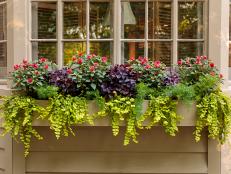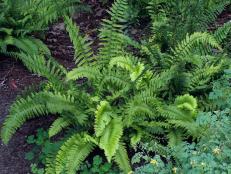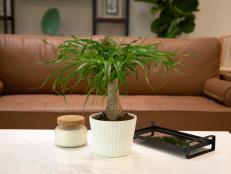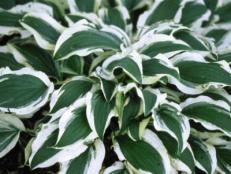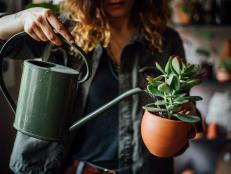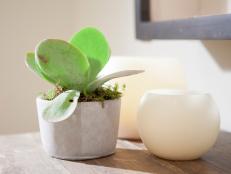The Best Ferns to Grow Indoors
Green up your home with a graceful, tropical fern.
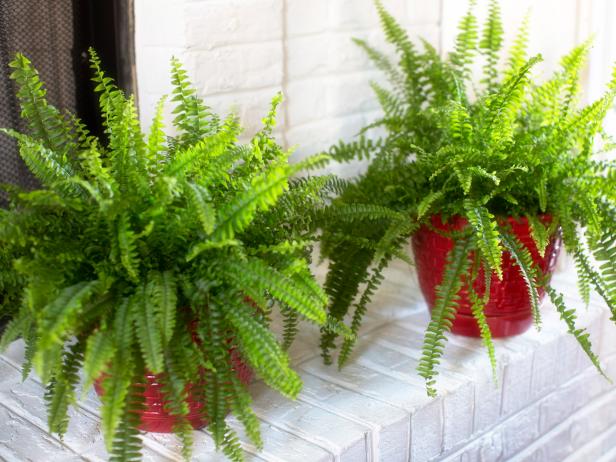

Ferns can add a tropical look to your home. Many make wonderful, low-maintenance houseplants, as long as you're careful to provide the right amounts of light and moisture.
Meet a half-dozen of our indoor favorites.
Boston fern (Nephrolepis exaltata), sometimes called sword or ladder fern, was as popular with Victorian gardeners as it is today. It’s also considered one of the most effective houseplants for removing air pollutants. Give these plants morning sun, try them in hanging baskets or pot them up and sit them on shelves so their long, drooping fronds can hang down. If your home is dry, expect them to drop their leaflets and make something of a mess. To prevent this, give them plenty of humidity and keep them away from heat and air vents. If your space is limited, look for a dwarf cultivar.
Bird’s nest (Asplenium nidus) is an easy-care fern. Its strappy, leathery fronds emerge coiled up from the center of the plant. As they unfurl, they create a vase-like or bird’s nest shape. While slow growing, this fern can reach 6 or 7 feet high in a greenhouse or outdoors, but it stays around 1 to 2 feet tall when grown inside. It can tolerate less humidity than most ferns and is forgiving if you occasionally forget to water.
Button fern (Pellaea rotundifolia) is another easy-to-grow beauty. Native to New Zealand, it adapts well to average home conditions. It takes its name from the small, round “buttons”—or leaflets—on its slender stems. Give it moderate to high humidity. Since it grows just 12 to 18 inches tall, it’s a good choice for gardeners who don’t have much room.
Maidenhair fern (Adiantum) earns a spot on our list because of its lacy, airy foliage and slender, black stems—but it needs constant moisture and can be tricky to grow indoors. If the plant is allowed to dry out, its fronds will wilt and die. But unless you've neglected to water it for so long that the entire plant dies, it will eventually put out new shoots. For best results, grow maidenhair ferns in terrariums, which provide the constant, high humidity they crave.
Silver Brake (Pteris cretica) is a low-maintenance plant with attractive, silvery stripes on its fronds. These ferns grow about 2 feet tall and wide and are pretty in pots or hanging baskets. While they like daytime temperatures that range from 68 to 72 degrees F, they prefer a drop to around 50 to 55 degrees at night.
Kangaroo paw (Microsorum diversifolium) is an export from western Australia. It grows about 2 feet tall, with long, oddly-shaped fronds that spill over and down the sides of its container. Kangaroo ferns bloom outdoors in spring and summer, but if you have the right conditions, you may be rewarded with blooms anytime during the year.
Tips for growing ferns:
- Most ferns are happy with indirect light from a north-facing window or, during the summer, in the filtered light from an eastern exposure. Avoid windows that face the west or south; they can become too hot.
- Remember that many ferns hail from the tropics, where the humidity measures 70 percent or more. Average homes are much drier, especially when the heat is running in the wintertime. You’ll know plant is too dry if the tips of its fronds turn brown or die. To increase the moisture in the surrounding air, put your fern on top of some pebbles in a tray or saucer filled with a little water. Just don’t let the plant touch the water, so its roots won't rot.
- Misting your fern is another option. Use room temperature water and mist around the plant—not directly on the foliage, which could invite diseases.
- You can also group ferns and other houseplants together to raise the humidity or keep your plant in the bathroom or near the kitchen sink.
- Although most ferns like to stay evenly moist, don’t let them get soggy. Water until the water drains out the bottom of the container and dump any excess.
- Give your fern good air circulation.
- If scale, mealybugs, mites or other pests show up, knock them off with a spray of room temperature water in the sink or shower.






